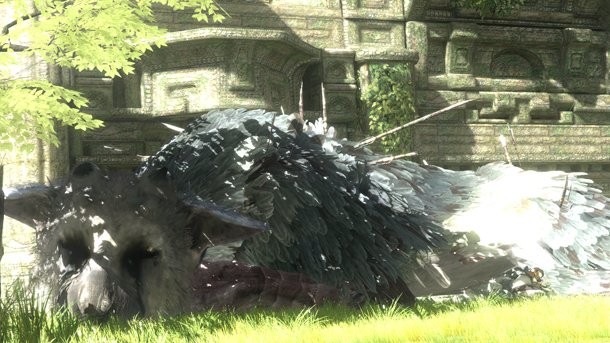Interview: Fumito Ueda on The Last Guardian

One of the perks of TGS is that usually reclusive Japanese developers come out in spades. This being true, GI editors Meagan VanBurkleo and Jeff Cork had a chance to chat with famed Team Ico lead Fumito Ueda about his thematic trilogy, design mantra and his latest PlayStation 3 project, The Last Guardian.
Game Informer: It’s obvious that Ico, Shadow of the Colossus and The Last Guardian aren’t direct sequels – more along the lines of spiritual successors. In your opinion what is the mantra or theme that unifies each of the iterations?
Fumito Ueda: It wasn’t something that I intentionally thought out when creating the three pieces. But, I think it is interaction if you will. It’s both interaction between the characters and the relationship between the characters, but it’s also interaction in terms of texture and gripping. That sort of aspect.
GI: The games certainly share common elements, but there are no outright links that say, “This is the same world.” You have to look really hard for those elements, whereas most developers would have simply spelled it out. What is your reasoning behind that?
Ueda: We didn’t set out to make connecting worlds between the three. Rather it is more along the lines of my personal preference as well as the team’s preference, and the worlds kind of seem to converge in some aspects. So we thought that if there are already these similarities, why don’t we make a loose connection between these worlds? And for The Last Guardian, we have set off to make a completely different world. But it may end up converging with the other worlds loosely. Or it may not.
GI: The reason people connect the dots and tie the worlds together is because they are united by a very unique art direction. Can you speak to the influences and inspirations for the visual style of your games?
Ueda: In terms of the visuals and the textures, or the material feel to the visuals, it was greatly inspired by cell animation and Japanese animation. But the way the space is created or the way the stage is created has more has to do with the constraints that were placed on the game design.
GI: It seems like another theme you have in your games is a weak character and a strong character or a big character and a small character working together or battling each other. What do you find interesting about that contrast?
Ueda: One reason again is the constraints of game design and that is a large part of it. But the other aspect I try to keep in mind is a visual hook for the player. If you have a tall man and a not so tall woman, it’s a typical couple perhaps. But if you have a very tall woman with a little boy it may be a visual hook for the user. So I think harmonizing and making expected expressions is something I want to avoid. I think the core of entertainment is providing something unexpected and surprising.
GI: You’ve mentioned restrictions on game design several times now. Now that you are moving to the PlayStation 3, do you feel that the system is affording you anything that you didn’t have before?
Ueda: So there weren’t any drastic or vast changes with the PS3, but we are able to add more details to the expression. So we can now show the tugging of the skin on the beast, or the textures of the wings or feathers and so on.
GI: Is there a reason you are drawn to featuring younger characters in your games? Does it make the sense of danger that much more urgent?
Ueda: One reason is maybe that the ages are similar to the target age. But I have reasons for the age in each of the titles. For example, in The Last Guardian, the boy is young because the beast represents the one that has the power, as in the one with the physical power and the one that can overcome obstacles. Then the boy is the intellectual one – using the brains instead of muscles. So by making it a boy you can intuitively see that he won’t have physical power and won’t be able to use big weapons.
GI: Can you elaborate on the other ages?
Ueda: Well, in Ico, the main character was 12; Wanderer in Colossus was 17 and the boy in The Last Guardian will probably be younger than Ico. We’re not entirely sure what the age will be.
GI: When you first started Ico did you have all three titles conceptualized? Or did one organically flow to another after completion?
Ueda: I never had a big plan. It was really one project at a time and putting all my abilities into that one title. I didn’t think about the title after that. I feel that if I can release this title and complete it then I can die. [laughs] That’s how much I pour into each title.
GI: When you are working on such unique and innovative titles, how do you balance the creative vision with the commercial appeal?
Ueda: Well, I’m not so sure that I do have a balance between the creative and commercial side. [laughs] I think the visual expression is unique, but the theme of each title is very universal. In Ico the theme was a boy meets girl adventure; Wanderer is about a boy going up against a giant, which every boy dreams of, and in The Last Guardian it’s about animals and so it can be received by a broad audience. So the themes are very mainstream.

Get the Game Informer Print Edition!
Explore your favorite games in premium print format, delivered to your door.
- 10 issues per year
- Only $4.80 per issue
- Full digital magazine archive access
- Since 1991









